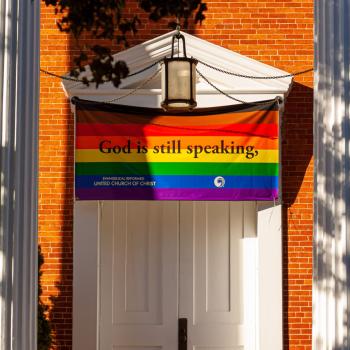Critical race scholar Angela Harris opens her seminal essay, “Race and Essentialism in Feminist Legal Theory,” referencing a short story by post-modern author, Jorge Borges. In Borges’ “Funes the Memorious,” a young man experiences a horse-riding accident. Suffering brain trauma, he becomes lost in a conceptual and linguistic world of his own making. It is a world utterly unique to him. His verbal expressions are entirely nonsensical to others even though they allow him to function in the world and are composed of real words. In short, Funes has his own private language that no one else understands but that makes sense of his experiences. He can survive but without any real relationship to others.
Harris references Borges’ story as a guardrail in her attempt to argue against the idea of there being anything essential to the social category “woman” or “female.” Her concern being that if she seeks to rid any notion of essence from the conversation about social categories (e.g., the female experience), her theory could devolve into complete solipsism. This would be just like Funes’ system which is “a unique and private system of classification, elegant and solipsistic” (Harris, Race and Essentialism, 582).
Although Harris makes a valiant attempt to salvage something common to all woman, while at the same time focusing on the particular experiences of black women, it is not clear she succeeds. Yet, in the process of segregating the experiences of black women from those of white feminists, Harris relates a typical occurrence at feminist conferences that is of peculiar interest. The occurrence she relates is strikingly analogous to a scene in C.S. Lewis’ classic novel, The Great Divorce.
First, I will look at Harris’ proposed solution to the problem of female essentialism. Then I will consider how Lewis’ vision of hell, i.e., “The Grey Town,” illustrates the real problem of human identity and freedom.
Of Words and Selves: The Post-Modern Take on Language and Identity
A central idea behind Harris’ theory is the post-modern assumption that language or its use is merely a game. Words don’t refer to or “pick out” real things about the world. Our terms and the way we put them together are at bottom expressions of inner feelings, rudimentary impulses and brute perceptions. Objective knowledge is inaccessible and claims do not require justification.
Words are not even things we use to express the deepest longings of our true “self.” For, as Harris points out, there is no such thing as a self:
It is a premise of this article that we are not born with a “self,” but rather are composed of a welter of partial, sometimes contradictory, or even antithetical “selves.” A unified identity, if such can ever exist, is a product of will, not a common destiny or natural birthright.
Harris, Race and Existentialism, 584.
As such, we are always a product in the making: our own making. Some of what we are we self construct. The rest society imposes on us. There is nothing transcendent to appeal to which can help us identify who or what we are. We are bundle of constructed properties, each one different from the other. Christians should easily identify the metaphysical implications of this view. These implications are fundamentally at odds with the biblical revelation and its dogmatic claim about the human person. The Church traditionally has called this the doctrine of the Imago Dei, a doctrine that grounds our common human identity.
Given Harris’ take on language and identity, the human person is best understood as a “constant contradictory state of becoming” and a center of “multiple consciousness” (Harris, 584). There is certainly a kernel of truth here. If we really are cut off from our God-given identity (and purpose), maybe this just is what we are? And that regardless of the protests of some evolutionary biologists who might reduce the “self” to mere brain states.
Who Has It Worse?: The Battle Over Identity Trauma
There are implications of seeing the human creature as a bundle of socially constructed properties with a language nearly of one’s own, i.e., a grammar grounded entirely in 1st-person experience. One, is that there will inevitably be relational breakdown with other people. After all, how are we going to share our experiences with each other if there is no common identity or language between us? We might as well be like distant alien cultures, “morks” and “borks,” who share nothing in common yet only know they desire to communicate with one another.
Further, because in reality we are sinful creatures with a common nature, the attempt to relate our experiences to others will often be strained from the start. Our communicative intent will not necessarily be honorable. It will not necessarily be to share something pleasant or joyful or good, or even true. Rarely will we attempt to encourage, to build up or to edify and often our intent will be to compare and compete, to gain advantage or tear down. Harris mentions an example in her article that suggests this very thing.
In the article, Harris relates a typical dynamic that occurs often at feminist conferences. A dynamic we might describe as fighting over who has had the shortest end of the stick in life.
The gameswomanship is palpable at any reasonably diverse gathering of feminists with a political agenda. The participants are busy constructing hierarchies of oppression, using their own suffering (and consequent innocence) to win the right to define “women’s experience” or to demand particular political concessions for their interest group. White women stress women’s commonality, which enables them to control the group’s agenda; black women make reference to 200 years of slavery and argue that their needs should come first. Eventually, as the group seems ready to splinter into mutually suspicious and self-righteous factions, someone reminds the group that after all, women are women and we are all oppressed by men, and solidarity reappears through the threat of a common enemy.
Harris, Race and Essentialism, 606
This whole scene reminds one of the scattering after the Tower of Babel. In this case everyone understands the words but nothing constructive emerges. The whole endeavor has collapsed into a battle of who belongs to the “class” that is the greater victim of oppression. The common project is lost due to an inability not to communicate but to relate. To her credit, Harris wants to move the discussion “beyond” this comparing of victimization based on classifying and the ranking female “essences.” She wants to embrace the “multiple consciousness” model of the person, which she thinks will move women away from such petty conflict.
Harris’ Answer to Feminist Theory’s Problem
For Harris, no one should be treated as “a woman” or even “a black woman.” At least not if one thinks those terms carry something essential to the person. Instead every female “body” and black, female “body” is a amalgam of multiple, contradictory selves. The goal is to not see essences but to see everyone as a product of their own creative will– a will that is working in time and over time on a product that is never finished.
Harris believes seeing each other as works in progress with regard to who we are and even what we are, will somehow liberate people from the bonds of current feminist theory:
However… the recognition of the role of creativity and will in shaping our lives is liberating, for it allows us to acknowledge and celebrate the creativity and joy with which many women survived and turned existing relations of domination to their own ends.
Harris, Race and Essentialism, 614
Unfortunately, Harris’ answer to what is essentially (no pun) the ancient problem of “the one and the many” is to reject the idea of the “many,” or corporate identity, in favor of the one, the individual identity. However, she then internalizes the many by arguing that each person consists not of one self, but of multiple selves.
As such, Harris’ solution leaves us not only devoid of a common nature we all share (womanhood, manhood, image bearer of God), but there is nothing essential to any individual which unites us, i.e., me or you, as a whole “self.” The existentialist search for the “authentic self” remains elusive as the individual will can never complete itself. And so we have no corporate identity under which we can unite, nor are we even coherent individual selves. In the end this all seems quite hopeless. One would at least want to say in humility, “shame on me” for not being a fully actualized self. After all, how is anyone to understand “me” if there is no “me” to understand?
The Grey Town of Intersectionality: Lewis’ Vision of Hell and The Prison of Self-Identity
In The Great Divorce, C.S. Lewis presents us with a profound vision of hell. Traveling to heaven in a heraldic bus, the narrator looks out over an expansive “grey town”:
“I looked out of the windows. We were now so high that all below us had become featureless. But fields, rivers, or mountains I did not see, and I got the impression that the grey town still filled the whole field of vision.”
Excerpt From: C. S. Lewis. “The Great Divorce.” Apple Books.
The town seems to be growing in size but the inhabitants live increasingly distant from one another. One of the narrator’s fellow travelers, an inhabitant of the grey town, explains:
“The parts of it that I saw were so empty. Was there once a much larger population?’
‘Not at all,’ said my neighbour. ‘The trouble is that they’re so quarrelsome. As soon as anyone arrives he settles in some street. Before he’s been there twenty-four hours he quarrels with his neighbour. Before the week is over he’s quarrelled so badly that he decides to move. Very likely he finds the next street empty because all the people there have quarrelled with their neighbours—and moved. If so he settles in. If by any chance the street is full, he goes further. But even if he stays, it makes no odds. He’s sure to have another quarrel pretty soon and then he’ll move on again. Finally he’ll move right out to the edge of the town and build a new house. You see, it’s easy here. You’ve only got to think a house and there it is. That’s how the town keeps on growing.’
‘Leaving more and more empty streets?’
‘That’s right.”
Excerpt From: C. S. Lewis. “The Great Divorce.” Apple Books.
In this vision of hell the solipsistic damned move further and further away from each other. They cannot stop thinking about their own self (with all its contradictions and incoherence) and, as such, they cannot abide being around any other self. Because Satan makes division and isolation easy for the damned, they can simply “think” of a new house and poof!, there it is. Each soul is confined to its own communicative world, entirely self-contained and segregated from all other worlds. Each soul also sees itself as the ultimate victim of circumstance.
And so, these “selves” live forever (or so it appears in the story) in a world of their own making, with an identity of their own creating and eternally assuming they have had the short end of the stick. This is a vision of the lost that rings frighteningly true. Harris’ description of feminist gatherings seems to parallel Lewis’ grey town in uncanny fashion. Neither does Harris’ proposed solution of a self-constructed, multiple-consciousness “self” seem to suggest a different outcome, if we assume an eternal timeline.
Conclusion: Look Not To Your “self…”
The answer to this solipistic hell is, of course, for each person to stop looking at themselves and to look to their Creator. Only there do we find our authentic self and our true identity. In Lewis’ novel, however, only one of these ghostly souls makes that transitions (the one struggling with lust). The rest remain locked in their own sin, unable to escape their self-made identity. And so, “the gates of hell are locked from the inside,” and no liberation is afforded them anymore.
Of course, today we might protest this vision. After all, isn’t this image of hell the product of a white, patriarchal, heterosexual male? Is this not the type of person we are told to avoid or condemn in our current social justice world?
Then again, if there really is something common to us all, perhaps there is more to what Lewis is saying than not?


















